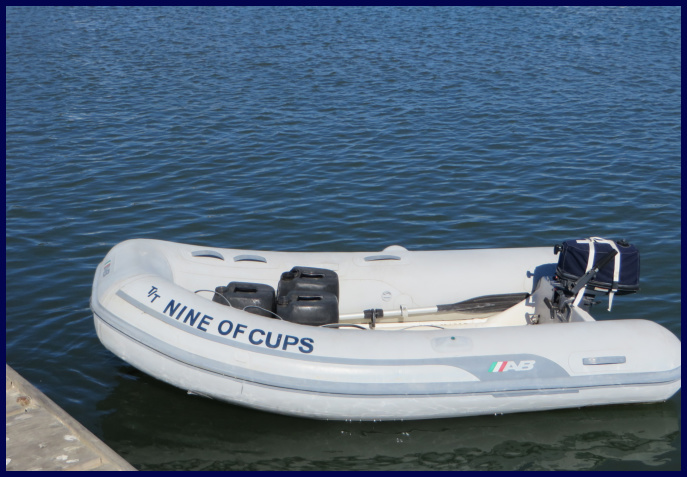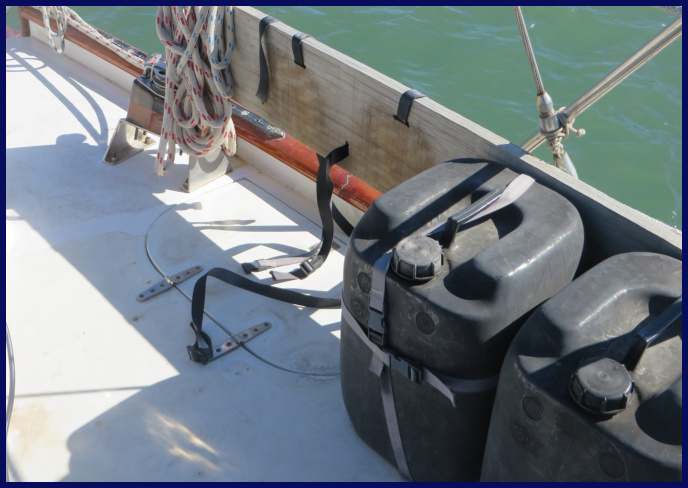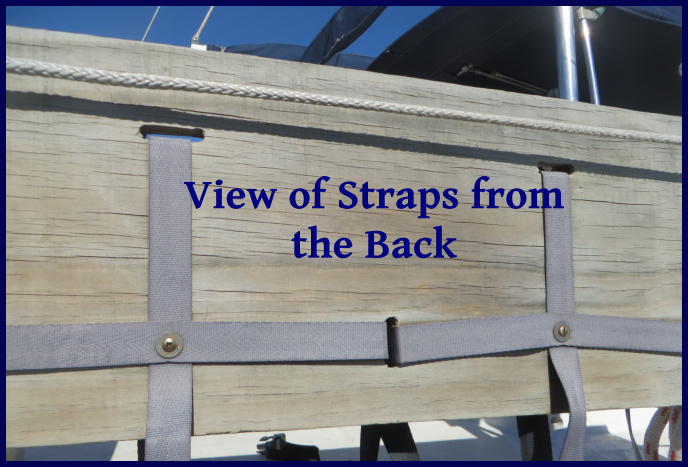The Blue View - Securing the Fuel Cans
/ We have a lot of fuel cans aboard Nine of Cups – 11 to be exact. We have six 8.7-gallon (33 liter) cans for diesel, another four 5-gallon (20 liter) jugs for gasoline and one small 1-gallon (4 liter) can for mixed gasoline that we sometimes take with us in the dinghy if we are planning a long excursion.
We have a lot of fuel cans aboard Nine of Cups – 11 to be exact. We have six 8.7-gallon (33 liter) cans for diesel, another four 5-gallon (20 liter) jugs for gasoline and one small 1-gallon (4 liter) can for mixed gasoline that we sometimes take with us in the dinghy if we are planning a long excursion.
Unless we are about to head off somewhere that fuel will be difficult to come by for a long while, like an ocean crossing or down into Tierra del Fuego and Patagonia, the jugs spend most off their time empty. We usually keep one or two of the gas cans full, but the primary purpose of the diesel cans are for toting fuel from the local filling station to the boat. For a variety of reasons, over the past 15 years we've refueled using jerry cans far more times than we've used fuel docks. Many times, there is no fuel dock available in whatever port we are in, or when it is available, the fuel pump is often intended for ships and large fishing vessels who buy it by the ton. I prefer to filter the fuel before it goes into the tank, and this is more easily done if I pump it from jerry cans. And, Cups has suffered far more damage from my banging her into jetties and wharfs than she has in all the storms and rocks we've encountered. I may spend a lot of time toting empty cans ashore, then wrestling them into the dinghy and back aboard Cups, but this is usually preferable to my angst when it is necessary to maneuver the girl up to and away from the typical fuel dock.
Six diesel fuel cans is a good number. They will usually just fit into the trunk of a taxi if the filling station is too far to walk. They fit snugly into our dinghy. It's also the number of fuel cans that will fit nicely on the aft deck.
Keeping them securely in place is something that requires some thought. When we are taking green water over the sides and Cups is pitching and rolling, the cans, especially if they are full, take a beating. I mentally pictured a 6'8”, 300 lb offensive lineman (for you non-Americans, think a 203cm, 136kg not-so-gentle giant) trying to rip them loose, and tried to design the lashings to withstand his best efforts.
I started with two fairly large, 2”x12”x72” (50mm x 30cm x 180cm), planks. These were secured to the aft rail on each side using stainless u-bolts. Each can is then secured to the plank using two web straps - I used medium weight 1” (25mm) webbing. One strap goes around the girth of each can and one goes from top to bottom. The straps are secured on the back side of each plank with a small screw to keep them properly positioned. I like having two straps for each can. I think it is quite likely the can may slip out from under a single strap when we are on a significant heel and get hit by a wave.
Marcie sewed buckles on the ends of the web straps, so the cans can be snapped into place and cinched tightly. Webbing expands and contracts with temperature, so I periodically check each strap for tightness.
Knock on wood and thanks to Neptune, we have never lost a fuel jug overboard, despite having weathered a few storms and a number of gales. It could be because of the well-designed straps – or more likely it's because we never start a passage on a Friday, always give Neptune a hearty tot of rum at the beginning and end of each passage, and never, never kill an albatross.





